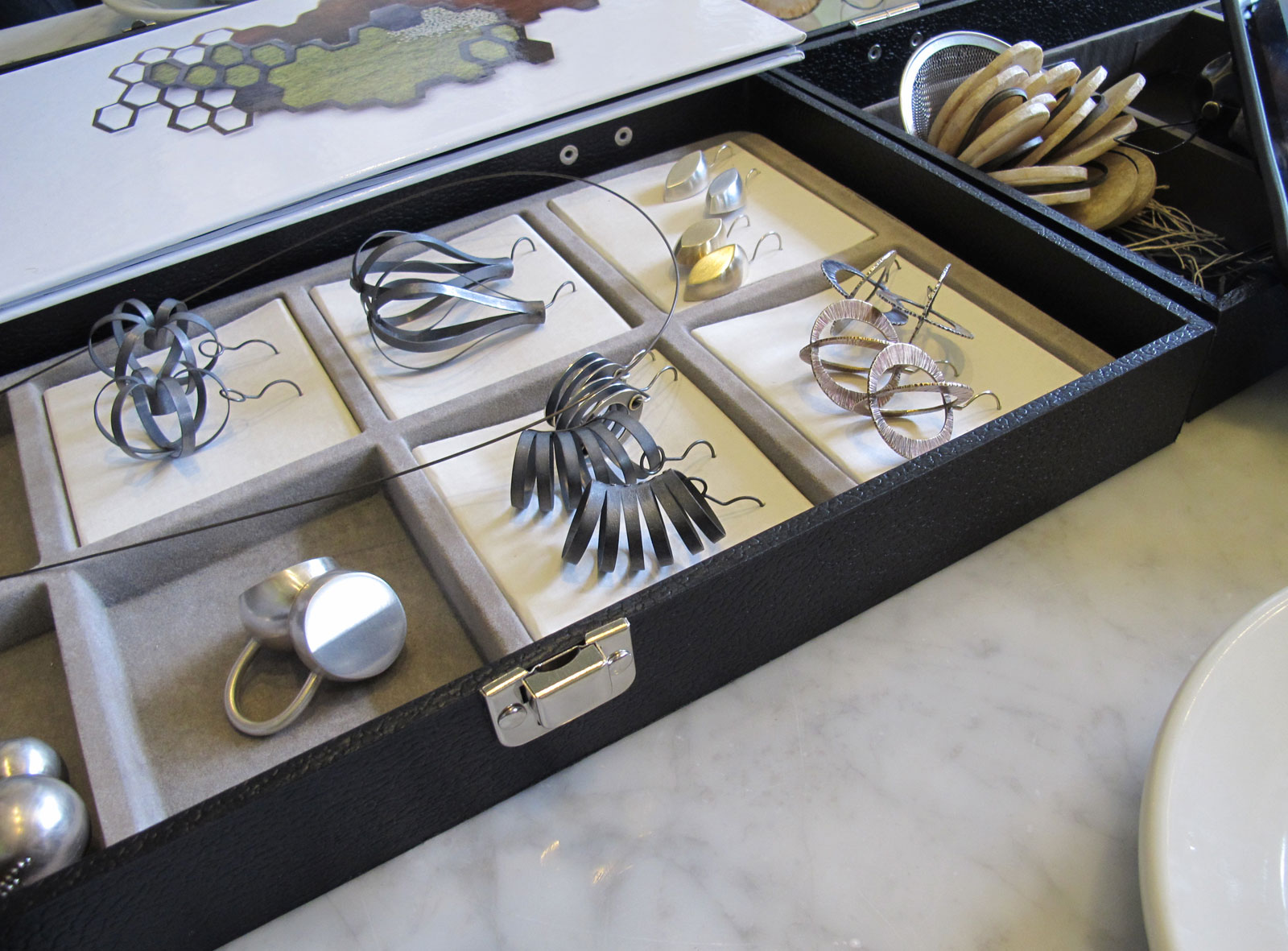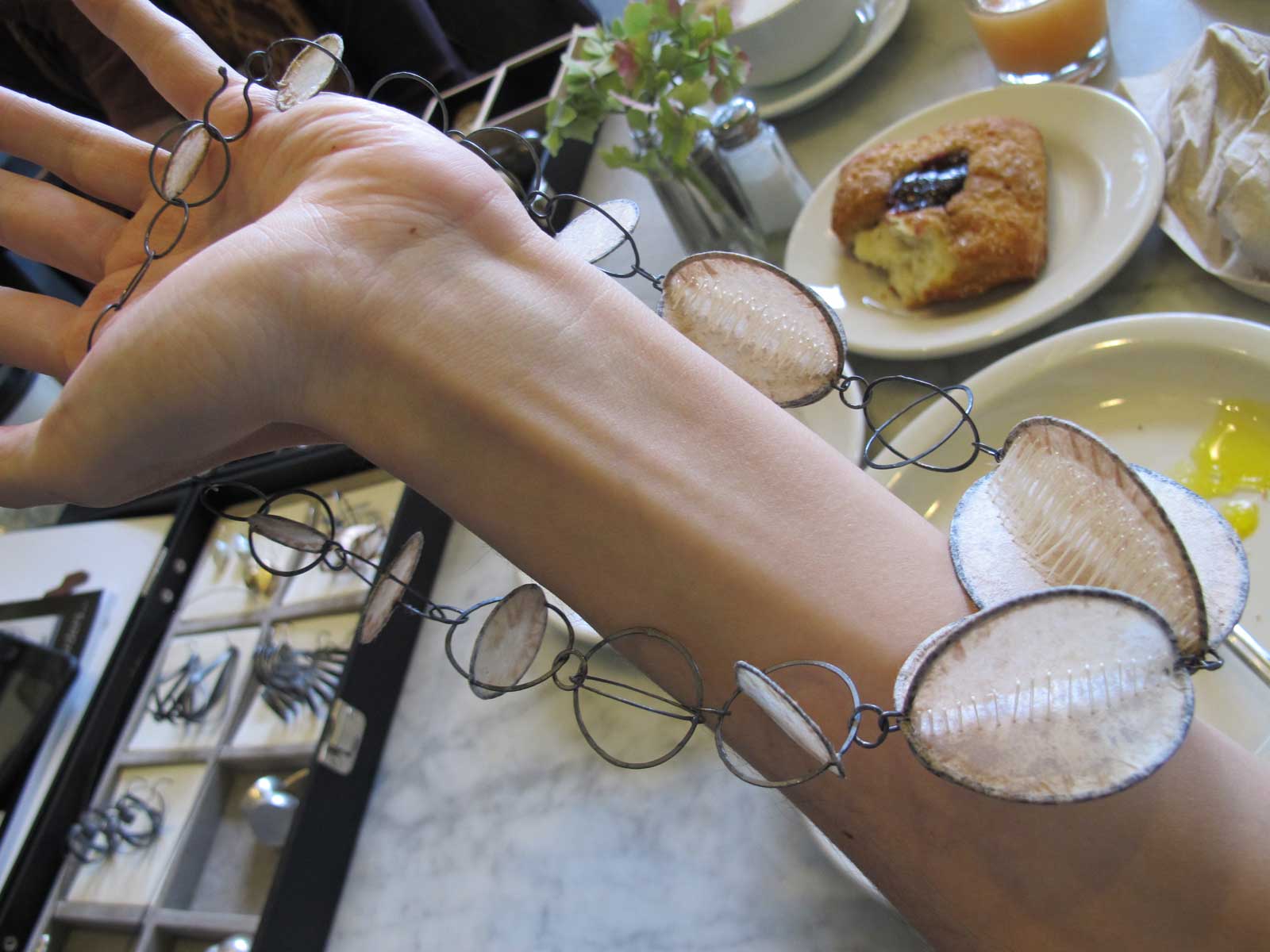Native art has always been about reconciling new influences with maintaining a lineage from past to present, and into the future. Tradition is respected because it is both one's history, and identity as a people. Within the bounds of tradition, of the lessons passed down from great grandfather to grandfather to father, and from great grandmother to grandmother to mother, there is a line that ties everything together, a collective memory that gives form and substance to life.
The vitality of that living tradition was on full display at the Heard Indian Fair & Market this March, 4 – 5, in that crossroads between cultures, the sunbathed urban expanse of Phoenix, Arizona. This was the best year I have ever seen at the Heard Museum. Despite the strife and unease that permeates our nation (or perhaps because of it), there was a sense of brilliance in the work on display, an energy that presented itself through an originality of design and composition, a keen and precise craftsmanship, a wide diversity of media and most important, a feeling of renewal, of a new generation of iterations growing from some root or trunk that was much more ancient. The synergy between experimentation and tradition has never been greater for Native art.
The Katsina carvings of Manuel Chavarria Jr. are proof that there can be a great spirit thriving within age. He is a Hopi artist who fashions very traditional katsina dolls. Katsinas have evolved much as they have become objects for sale to White customers, where katsina carvers, with modern tools and materials available to them, push the art form into magnificently complex and vibrant sculptures, often seeking to outdo themselves by whittling a massive, foot-and-a-half high katsina, poised in song and dance, from a single piece of wood.
In older days, though, katsinas were much simpler. An effigy of the spiritual being they represented, the makers of centuries past breathed life into their creations by carving vestigial limbs, etching out of the wood the barest necessity of detail needed to show a skirt, reveal a cape or depict a leering grin. Time was a resource to be invested wisely, and that bred a style of katsina where minimalism and symbolism provided all the vocabulary one had to express one's self.
Manuel takes this tradition and furthers it with a careful touch and a lyrical witticism. His use of vegetal and mineral dyes, which he applies sparingly, lends a wizened quality to his miniature beings that makes them feel as if they are much, much older than they really are. Now, actually that is not quite true. The spirits that he is making vessels for are as old as the world itself, but in his hands perhaps one should say they are as young as the world. A cheeky bending of the waist, a tilting of the head, bug eyes staring out bright as the headlamps of a truck in the desert, knees and elbows crooked at just the right angle, Manuel's dolls are playful, inquisitive, and attentive.
Raven Mask (name not known) by Jason Reed Brown. The chain links which Jason incorporated into this piece add a mystical aural component, and is a decorative element he employs in some of his other sculptures. I thought it was interesting because Siberian shamans are supposed to have an iron chain tied to their ceremonial vestments, so that in an emergency they can be dragged out from the spirit realm, with the metal chain serving as an anchor to the material world.
When diverging from the traditional ways and materials, Native identity becomes a complicated subject. Somewhere, there is a line across which one is no longer making "Indian" work, unrecognizable, a cessation of that thread that has been unbroken since days long ago. The flip side is being stereotyped. Handling the balance between those two edges, and having innovation and tradition comfortably coexisting together has been a difficult path for many Native artists, particularly younger ones, to navigate.
These last few years, and 2017 in particular, has seen that process of experimentation, of going to one extreme and then pulling back, come to a magnificent result. I saw more artwork at the Heard Fair than I ever have in the past years of attending the show that illustrated a natural ingenuity. Unforced, unpretentious, but different, original, playing with old themes in new ways; that was what made this year's fair so exciting. The forged steel sculpture of Jason Reed Brown, a Kokuyon Athabascan blacksmith from Alaska, brings forth one of the best qualities of modern Native craft; a faithful reinterpretation of old ways with new materials.
In many ways, Native art has always been a reflection of one's environment. The materials used to create it were gathered from grass, brush, wood, earth, bark, sand and stone. The symbols and creatures it depicted were gathered from one's surroundings, the local wildlife, the spirits that dwelled within rock and tree and river. Native Americans for the past few centuries have had to go through a period of intense struggle as that environment changed around them. Now for many, instead of the gentle expanse of nature and the quiet havens there is asphalt, concrete, noise, smoke and metal.
Jason, like many youthful Native artists, have tackled this strange new world and wrestled from it the one purifying action for any alien landscape; rendering it into objects that are recognizable and have meaning. He hammers steel into bold, archaic statuary, totemized animals and spirits that use the same vocabulary of shapes, formlines, ovoids, U forms and S forms, as the Northwest Coast art of olden days. However, the magic touch is his inclusion of the original soul of the steel, recycling rivets as eyes, using checkered plate as textured skin, integrating old industrial grips as a fish's fins or Raven's piercing gaze. The beauty of this re-use is clear. What was old, discarded, dead, forgotten has seen the light of a new day in this spiritual transformation, a rebirth that sees the valueless becoming valuable, that which was aimless now full of power and intent. It is utterly magnificent.
Salmon I by Jason Reed Brown of steel and copper.
In Manuel Chavarria Jr. and Jason Reed Brown, we see two poles in contemporary Native artwork that has common ground. Both have the ability to innovate on tradition in a way that respects the past, while keeping some essential spark that makes their work feel alive, wild, and free. That spark is called honesty, and can be found anywhere that the process is elevated above the desired end result. Native American art and craft is currently experience a surfeit of that creative force, and the results speak for themselves.
Jason Reed Brown's work is at hammerhandforge.com. Manuel Chavarria Jr. you can find either on Facebook, or if you google his name you can find a few galleries which sell his work.
Front and back of Hummingbird I sculpture by Jason Reed Brown. I'd originally thought it was like a totem pole, a tripartite stack of bird, animal, and fish. Perhaps that's what a hummingbird actually is.






